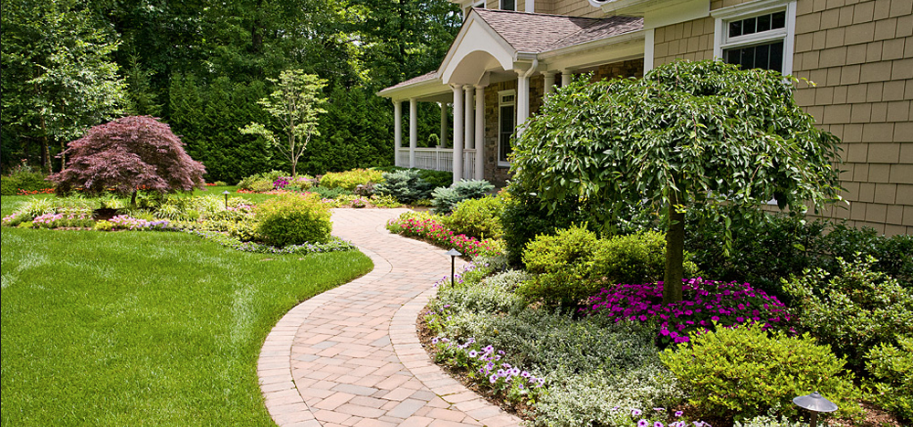
Here in the mid-Atlantic, when a particularly powerful storm rolls through the area, the landscaping you have worked so hard to create can be at risk. Wind is certainly a concern, but the rain that comes along with such a storm can be just as damaging. If you would like to help your landscape deal with storm water as successfully as possible, consider the tips we have outlined below.
A Strategic Garden
There is no reason that your storm water plan has to mean creating ugly spaces on your property, and this first idea is a good example of that line of thinking. Basically, the idea here is to create a bed of flowers in a part of the landscape where water will naturally want to collect during heavy rains. However, you don’t necessarily want to use the lowest part of the yard, as the soil in that section may not drain well. Rather, look for a spot you can use that is near the bottom of a slope but not necessarily at the low point. This will give water running down the slope a place to stop, collect, and hopefully drain in relatively short order.
Drain a Ditch
Naturally, if there is a ditch running through your property, that is going to be a natural place for water to end up during a storm. To make that ditch both a drainage solution and a pretty part of the landscape, consider filling it with rocks. You can use river rock to create a beautiful look – which can hide something like a perforated pipe that will carry water away to a drainage spot. When done correctly, this kind of landscaping will look as if it is there only for aesthetics, but it will actually play an important functional role, as well.
Plan Your Paving
When you have a driveway or other large paved surface installed on your property, don’t forget about how you are going to deal with water. Depending on the slope of the surface, and the surrounding area, you might want to use a pervious solution that will allow the water to run right through (instead of off to the side). There are a variety of pervious options for you to consider, including concrete pavers that are installed with gaps. Take time to consider your various options before going with the one that is best suited for your property.
Custom is Key
The biggest key to dealing with storm water properly is simply thinking about the needs of your landscape and how it has been planned from the start. Each situation is different, so you can’t necessarily just copy what someone else has done and expect it to work for you. Review various options such as those listed above and, if necessary, work with a professional who can help advise on the best ways to deal with heavy rains and other storm-related issues. With some careful planning and prompt attention to the issue, you should be able to mitigate the problems associated with storm water successfully.
